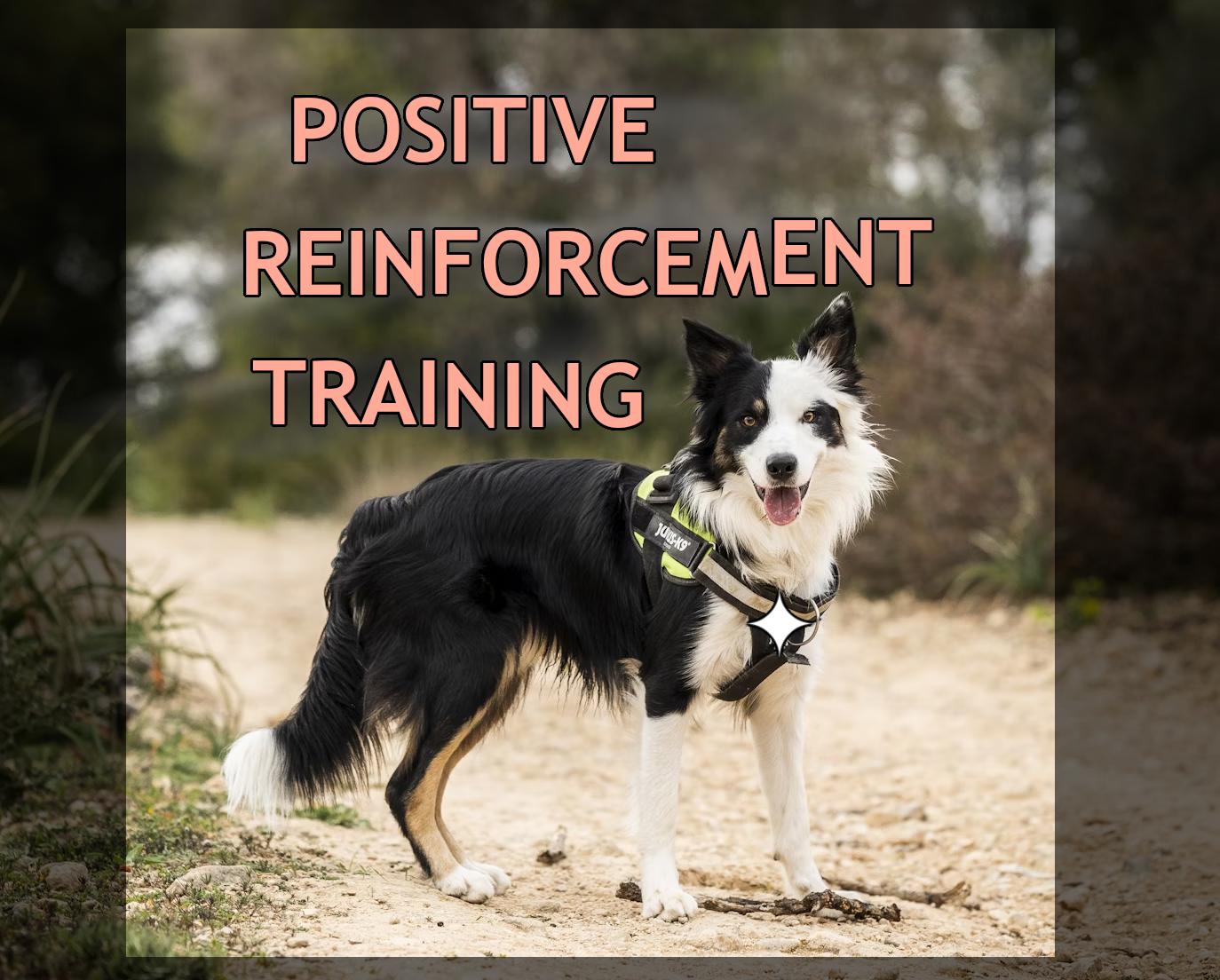Positive Reinforcement Training

Dog training is a deregulated field. Anyone can call themselves a professional dog trainer, start a business, take clients, and do as they wish. This raises the question of who can be trusted with dogs and how those dogs should be taught and trained. Here, science is advancing to show that positive reinforcement training is more ethical and effective than aversive training methods.
Positive reinforcement dog training refers to training that uses treats, toys, play, or other prosocial reinforcers. Positive reinforcement encourages dogs to make inferences, to think about what they are being asked to do and why they should do it, and rewards the desired result. Aversive dog training usually relies on punishment to achieve a desired result. This punishment can include prong, shock, or choke collars, or other antisocial reinforcers. Often, aversive training focuses on principles of dominating a dog’s will, or being what is colloquially known as an alpha.
If one wishes to reduce stress in dogs and maximize dog training efficiency, studies show that one should employ positive reinforcement.
“Does training method matter? Evidence for the negative impact of aversive-based methods on companion dog welfare” looks to explain the effects of aversive and reward based training styles on dog welfare. Within a study of ninety-two companion dogs it was indicated that “aversive-based training methods, especially if used in high proportions, compromise the welfare of companion dogs both within and outside the training context.”
Additionally, in “Dogs are more pessimistic if their owners use two or more aversive training methods,” when dogs were asked to explore rewarded, unrewarded, and ambiguous locations in search of food, the study was found to suggest that, “dogs trained using coercive methods may have a more negative mood state, and hence that there are welfare implications of training dogs using such methods.”
When looking at different attachment styles among dogs, “Carrots versus sticks: The relationship between training methods and dog-owner attachment” found that, “dogs trained with reward-based methods, but not dogs trained with aversive-based methods, played more in the presence of the owner than in the presence of the stranger, and they also followed and greeted the owner more than the stranger, although these differences were found for only one procedure order.” This suggests a more secure based attachment style present in dogs trained with reward centric training methods as opposed to aversive centric training methods.
Conversely, “The Welfare Consequences and Efficacy of Training Pet Dogs with Remote Electronic Training Collars in Comparison to Reward Based Training” has slightly differing results from previous studies. In this study, three groups of dogs, groups A, B, and C, were studied using trainers that implemented e-collars, those same trainers but without the implementation of e-collars, and different trainers that did not use e-collars respectively. Here the results showed that, “salivary cortisol in Group A dogs was not significantly different from that in Group B or Group C, though Group C dogs showed higher measures than Group B throughout sampling.” Corisol levels here being used to measure stress. However, while this could show evidence in favor of a lack of harm when using aversive based training, it is important to note that the dogs of Group A, “spent significantly more time tense, yawned more often and engaged in less environmental interaction than Group C dogs” This shows that even without a drastic difference in cortisol levels, the dogs that were subjected to aversive training still showed more stress behaviors than the dogs who weren’t.
Further, regarding the efficiency of using e-collars when training dogs vs not, in a study of sixty-three dogs, the findings of “Efficacy of Dog Training With and Without Remote Electronic Collars vs. a Focus on Positive Reinforcement,” “refute the suggestion that training with an E-collar is either more efficient or results in less disobedience, even in the hands of experienced trainers. In many ways, training with positive reinforcement was found to be more effective at addressing the target behavior as well as general obedience training.”
Because dog training is so deregulated, because there are so many differing opinions on the most efficient and effective ways to teach and train dogs, it is important to look at what direction science is heading. Currently, that direction is in favor of positive reinforcement based dog training. Positive reinforcement training, reward based training, is shown to improve dog welfare, mood, and optimism, as well as to create more secure forms of attachment between dogs and their human companions. Conversely, aversive training, punishment based training, is shown to increase dog stress and pessimism. Additionally, averse training is shown to be less effective at educating dogs than positive reinforcement training.
When deciding on a dog trainer, or when looking to educate a dog oneself, one should treat dogs ethically and avoid using aversive training methods, at least if one seeks to reduce dog stress and increase training efficiency as much as possible in one’s training. The science is there, it is important to follow it.
Article written by DemonDog (June 2025)
Find DemonDog at https://twitter.com/doggydaemons
Find ZDP on Telegram at https://t.me/zooeydotpub
Find the ZDP RSS feed link in our footer any time you're on the website! That url for anyone interested is https://zooeydotpub.org/feed.xml
Works Cited:
Ana Catarina Vieira de Castro, Jennifer Barrett, Liliana de Sousa, I. Anna S. Olsson,
Carrots versus sticks: The relationship between training methods and dog-owner attachment, Applied Animal Behaviour Science, Volume 219, 2019, 104831, ISSN 0168-1591, https://doi.org/10.1016/j.applanim.2019.104831. (https://www.sciencedirect.com/science/article/pii/S0168159119300127)
Casey, R.A., Naj-Oleari, M., Campbell, S. et al. Dogs are more pessimistic if their owners use two or more aversive training methods. Sci Rep 11, 19023 (2021). https://doi.org/10.1038/s41598-021-97743-0
China Lucy , Mills Daniel S. , Cooper Jonathan J. Efficacy of Dog Training With and Without Remote Electronic Collars vs. a Focus on Positive Reinforcement. Frontiers in Veterinary Science. Volume 7 - 2020 (2020). https://www.frontiersin.org/journals/veterinary-science/articles/10.3389/fvets.2020.00508. 10.3389/fvets.2020.00508. 2297-1769
Vieira de Castro AC, Fuchs D, Morello GM, Pastur S, de Sousa L, Olsson IAS. Does training method matter? Evidence for the negative impact of aversive-based methods on companion dog welfare. PLoS One. 2020 Dec 16;15(12):e0225023. doi: 10.1371/journal.pone.0225023. PMID: 33326450; PMCID: PMC7743949.
10 Oct 2014: The PLOS ONE Staff (2014) Correction: The Welfare Consequences and Efficacy of Training Pet Dogs with Remote Electronic Training Collars in Comparison to Reward Based Training. PLOS ONE 9(10): e110931.https://doi.org/10.1371/journal.pone.0110931



